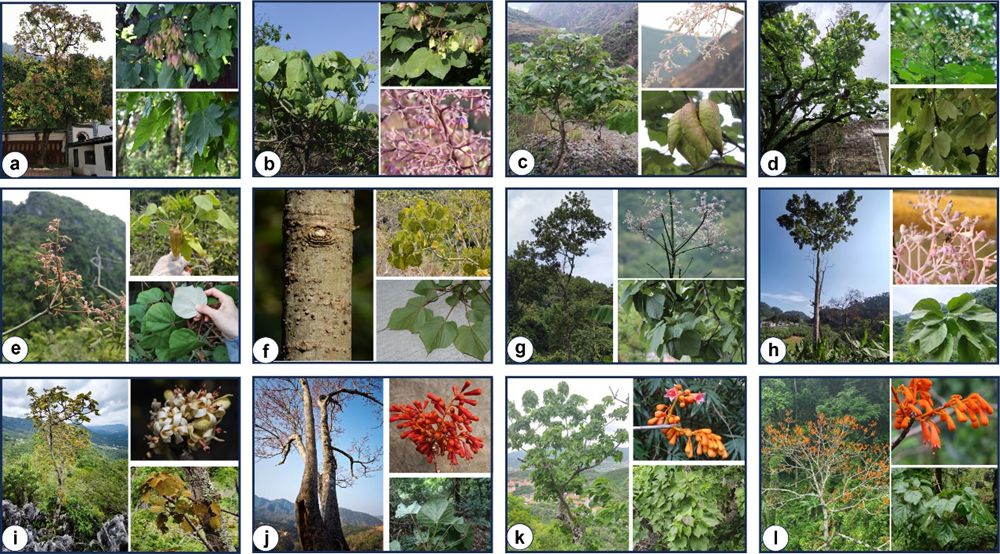Accurate species delineation is crucial for biodiversity conservation. The genus Firmiana Marsili (Malvaceae) comprises deciduous trees and shrubs, many of which are rare and endangered in China, underscoring the urgent need for effective conservation measures.To ensure the effective protection of endangered Firmiana species, the development of efficient DNA barcodes for rapid and accurate identification across life stages and plant material types is crucial.
In a study published in Integrative Conservation, researchers from Xishuangbanna Tropical Botanical Garden (XTBG) and Kunming Institute of Botany (KIB) conducted genome skimming on 62 Firmiana samples, representing all recognized Chinese Firmiana species, to assemble plastome and nuclear ribosomal DNA (nrDNA) sequences.
The researchers systematically evaluated DNA barcoding for Chinese Firmiana plants using genome skimming data. They assessed the discriminatory power of plastomes and nrDNA super barcodes, plastid hyper-variable regions, and universal barcodes.
Their species discrimination analyses showed that nrITS, either alone or in combination with trnH-psbA, rbcL+trnH-psbA, or matK+rbcL+trnH-psbA, was able to discriminate all 10 recognized species and should therefore be recommended as the primary barcode for the genus Firmiana.
Moreover, they identified two cryptic taxa within the F. major complex, providing important conservation implications for several Firmiana species. Beyond identifying the most effective DNA barcodes for accurate species identification, the study also provides valuable insights for future conservation, management, species discovery, and sustainable utilization of Firmiana.
“ This case study highlights the potential of genome skimming—simultaneously generating plastome, nrDNA, and traditional universal barcodes—as a promising tool for developing efficient species DNA barcodes, facilitating credible taxonomic revisions, biodiversity assessments, and conservation planning for Firmiana and other endangered plant taxa,” said YU Wenbin of XTBG.

Firmiana species in China.
Contact
YU Wenbin Ph.D Principal Investigator
E-mail: yuwenbin@xtbg.ac.cn
First published: 22 September 2025

